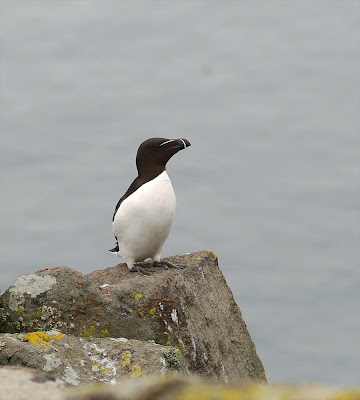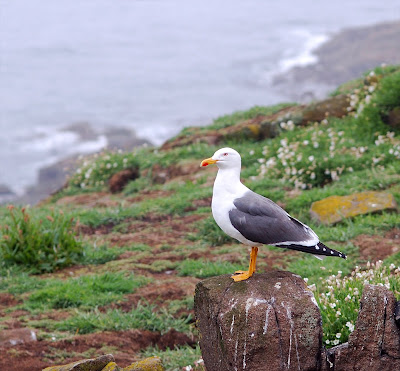My flatmate's schoolfriend came over from France to visit her and I suggested we visit Arran because in many ways it's 'Scotland in miniature'. The Highland Boundary Fault divides the island into highlands in the North and lowlands in the South and it has dramatic mountains, open moorland/sheep, unspoiled beaches and most importantly, is an easy day-trip from Glasgow.
The train from Glasgow to Ardrossan takes one hour and the Arran ferry takes an hour to sail from Ardrossan to Brodick harbour, from there you can catch a bus to anywhere on the isle. On the ferry you can get a decent fried breakfast and coffee (although the black pudding isn't great) and the chance to see gannets, various sea ducks and porpoises.
Arran is famous for its varied geology and this is reflected in the amazing diversity of its beaches. Corrie has red sea-sculpted sandstone rockpools, Brodick Bay and Whiting Bay have golden sands, Largymeanoch and 'the Fallen Rocks' at North Sannox have spectacular boulder-beaches and Blackwaterfoot has interesting sea caves.
Kildonan lies on the Southern coast of Arran and the beach has white sand intersected by rugged walls of rock, groups of Grey and Common seals bask on the shore and there are excellent rock pools. Along the coastline is a dramatic raised beach and above this there are green sheep-fields which abound with Brown hares.
From the coast there are excellent views of the tiny islands Pladda (flat, green and possesses a lighthouse) and the Ailsa Craig (further away, a sharply conical volcanic plug which was once quarried for the production of curling stones and also has a lighthouse - now automated).
 |
| Isle of Pladda |
 |
| Thrift (Armeria maritima) with Bird's-foot Trefoil (Lotus corniculatus) |
 |
| Thrift (Armeria maritima) |
 |
| Thrift (Armeria maritima) |

This slab of beach-rock strangely resembles an elephant's skin:


The Arran ferry has an entourage of very photogenic Herring Gulls (Larus argentatus). There is something distinctly velociraptor-ish about their faces, with their pale stern eyes and fierce blood-drop bills.
 |
| Herring Gull (Larus argentatus) |
 |
| Herring Gull (Larus argentatus) |
When a group of gulls are this close together, you can be sure that a squabble isn't far away! The bird second to the left is a juvenile in second summer plumage.































